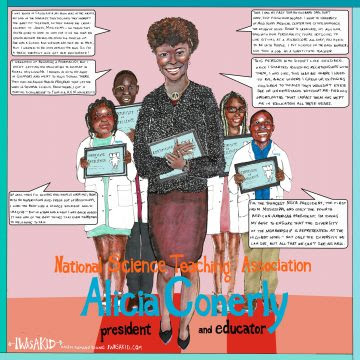What a pleasure it has been to get to know Kelly Dyksterhouse, a literary agent with the Tobias
Literary Agency. Kelly has her MFA in Writing for Children and Young Adults and specializes in
building the careers of authors and illustrators who work on a broad range of projects from
picture books to young adult novels, graphic novels, and fascinating nonfiction for the youth
market. I know that all of our Mixed-Up Filers are eager to learn more about Kelly.
SK: Kelly, tell us a little bit about your path to becoming an agent.
KD: While I was pursuing my MFA in Writing for Children and Young Adults, I applied for a
position as a reader at The Bent Agency. At the time, I thought it would be a good
opportunity to learn more about how the business side of publishing worked. In that role,
I read slush and full manuscripts and wrote reader reports on the fulls. That led to an
assistant position for Susan Hawk at Upstart Crow, who was, and remains, a most
fabulous mentor. After working for several years as an assistant, I joined Jacqui Lipton
at her new agency, Raven Quill Literary Agency and began building my own list. In 2022, RQLA
merged with The Tobias Agency.
While every path to becoming an agent is a little unique, this business remains one that
is apprenticeship based, and frankly the relationship-driven part of the industry is a
major part of what I enjoy about it.
SK: What can you tell us about the Tobias Agency?
KD: I love my team at TLA! We work very cohesively and support one another well, and a
win for one of us/our clients is celebrated as a win for all.
The Tobias Literary Agency is a full-service literary representation firm established in
2016. We specialize in shepherding writers and artists from dream to reality. Our literary
agents are nimble and fierce with a collaborative spirit. We take a 360-degree view of
our clients’ intellectual property. Each project receives a targeted plan for execution of
sub rights (film/TV, foreign translations, first serial, graphic novel adaptations, and more).
Authors and artists we represent include debut authors, New York Times and USA
Today bestsellers, multiple Bram Stoker Award winners, distinguished scientists,
Emmy-nominated journalists, Coretta Scott King honored illustrators, LA Times Book
Award winners, and authors selected by Reese Witherspoon Book Club. Our literary
agents represent the gamut of genres, including the finest in horror, children’s,
nonfiction and illustration. Our literary agents and literary managers take pride in investing in
clients’ long-lasting careers.
SK: Here at MUF, we are all about middle grade. What do you love most about middle-grade novels?
KD: I love that they appeal to readers who are on the cusp of independence. Kids who are actively figuring out who they are and where they fit in their world. I think what I love best about middle grade novels is that they really respect this time of life and take it seriously, reflecting all of the beauty and struggle and confusion and joy that are wrapped up in adolescence. Books for younger readers tend to be fairly straight forward, but the middle grade novel wrestles with questions, allowing the reader to ask
questions of themselves. It’s a time in life where readers are forming opinions and can choose their own books to read. We tend to idealize childhood and forget how hard and heavy and very, very immediate and important everything feels at this stage of life. The middle grade novel carries a huge responsibility in this respect—it can open new worlds or offer solace from the real one readers inhabit, creating space to process their own feelings through those of a character, space to dream and ask questions and not be
judged for doing so.
SK: Which middle-grade book(s) influenced you most as a child?
KD: Ah, so many! But the books I return to every couple of years to reread I found in 5th
grade: Robin McKinley’s The Hero and the Crown and Michelle Magorian’s Goodnight,
Mr. Tom. As a younger reader, I plowed through C.S. Lewis’s The Chronicles of Narnia,
Madeleine L’Engle’s A Wrinkle in Time books, all of Walter Farley’s Black Stallion
books, and of course Marguerite Henry’s Misty of Chincoteague.
SK: What are some of your favorite current middle-grade novels?
KD: Aside from those of my own clients, of course, I’ve really enjoyed Alyssa Wishingrad’s
The Verdigris Pawn and Between Monsters and Marvels. I love how she uses fantasy to
probe readers to ask questions about their own world, which I think is the genre’s
superpower.
I also really loved Dan Gemeinhart’s The Midnight Children—It was brilliantly structured,
written with so much respect for the reader, and it was a surprise to read. (I love books
that surprise.) I never would have suspected that a book that wrestled such heavy
subject matter would have me laughing out loud on an airplane at the climax. (I also
love books that make me laugh!)
Finally, I recently read Erin Entrada Kelly’s We Dream of Space and was really blown
away. Perhaps because it recalled so much of my own childhood—I was the same age
as the protagonist when the Challenger exploded and vividly remember watching it live
in our school auditorium, so the book hit home in that regard. But the character work in
that book is spectacular, and it’s a wonderful study for anyone who is seeking to deepen
their craft in terms of writing character.
SK: You seem to enjoy your work, but we know it has its tough parts. What would you say are the best and worst parts of being an agent?
KD: There are so many best parts! Every day, depending on what I am doing that day, my
answer will be different. I love the excitement of finding a new project that I can’t wait to
gush about. I love that no day is the same. I can start a day working on a picture book,
break to meet with clients and editors, and then end the day working on a novel, or a
nonfiction proposal. I love, love, love getting to call a client and tell them we have an
offer! And it is just amazing to hold a book in my hands that I helped shepherd into
existence.
So in a nutshell the best part of the job is working with creative people to bring fantastic
stories into the hands of children.
The worst part is easy—waiting and rejection. It’s part of the business, but that doesn’t
mean that it ever gets easy.
SK: What do you look for in a query?
KD: A strong query tells me what the book is about (who the character is, what they want,
and what the stakes are if they can’t get it, so the major dramatic question), with strong
comps to tell me where it will sit in the market, and does so clearly and succinctly in an
engaging tone or voice.
A query is a first impression, which I liken to an initial handshake in a job interview. It
needs to be professional, confident and show the writer’s competence and
understanding of their work and craft. The primary job of the query is to make me want
to read the book!
SK: What are the top reasons you pass on a submission?
KD: The number one reason I pass is that the writing is not ready. The concept and story
may be great, but it is clear that the writer sent it off before revising deeply or taking the
time to really refine their writing craft.
Another common reason I pass on projects is that the concept feels overly familiar—not
a fresh enough take to be able to stand out in the market.
SK: What is your best guess on where the middle-grade market is headed?
KD: I am seeing a lot of calls for books that could fill the audience “gaps”—younger middle
grade and older middle grade. Shorter, illustrated books that appeal to the 8-9 year old
reader, and then books whose subject matter appeals to the older middle grade reader
who is not quite ready for YA. (Some would call those books young YA, but I’ve been
seeing them announced as middle grade—books with characters as old as 15, yet
whose story might feel younger.) And there is still a great need for books that reflect a
diversity of experience and representation.
SK: Before you go, let’s have some fun with a lightning round. Please name your favorites!
Dessert: bread pudding with vanilla ice cream
Type of weather: a crisp, clear spring or fall day
Genre of music: depends on what I’m doing. Editing, I listen to classical instrumentals,
when writing I listen to movie soundtracks (instrumental), and when running I listen to
classic 80’s rock.
Season: Spring or Fall.
Game: I am enjoying a board game called Azul right now—it’s a fun strategy game with
tiles, and it’s really pretty. I also enjoy playing Hearts and Spades and Rummikub.
SK: I know that our MUF readers are going to want to learn more about you. Where can we do that?
KD:
● @kellydhouse is my SM handle for Instagram, Threads and Twitter.
● Kellydhouse@bsky.social.com
● Website: www.KellyDyksterhouse.com
● MSWL: Kelly Dyksterhouse
Thanks so much for sharing your time and wisdom with us, Kelly. We wish you great success in
your career as an agent. I’m sure a lot of new queries are about to head your way!




 Welcome to STEM Tuesday: Author Interview, a repeating feature for the last Tuesday of every month. Go Science-Tech-Engineering-Math!
Welcome to STEM Tuesday: Author Interview, a repeating feature for the last Tuesday of every month. Go Science-Tech-Engineering-Math! In
In 


 Last was
Last was 
